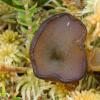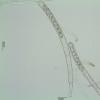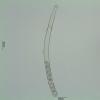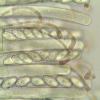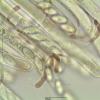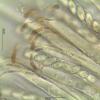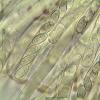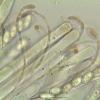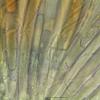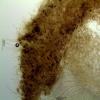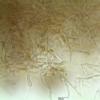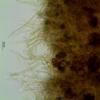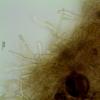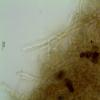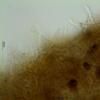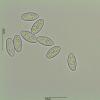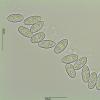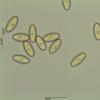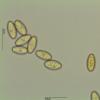
21-12-2025 09:32
Hello.A tiny ascomycete found embedded in wood in

21-12-2025 21:32
Pol DebaenstHello, Garden, Burgweg 19, Veurne, BelgiumOn 10/1

22-12-2025 23:38
Patrice TANCHAUDBonsoir, récolte sur un mur en pierre, apothéci

22-12-2025 00:47
Patrice TANCHAUDBonsoir, récolte à proximité du milieu dunaire

21-12-2025 21:40
Isabelle CharissouBonjour, j'aimerais connaitre les références de

20-12-2025 23:08
Patrice TANCHAUDBonsoir, récolte sur sol sablonneux dans l'arri�

Hola a todos.
Subo unas fotos de un asco que encontramos el sábado sobre Sphagnum en una turbera a unos 1300 metros de altitud.
Miden hasta 15 mm de diámetro y tienen forma de embudo.
Esporas elipsoidales a fusiformes, de 14,5-17,3 x 7,3-8,3 micras, con muchas pequeñas gútulas en su interior y con tendencia a situarse hacia los polos, con verrugas muy finas.
Ascas amiloides, pleurorrincas.
Paráfisis curvadas y con contenido interno de color rojizo.
Excípulo ectal formado por células globosas donde se forman estructuras con forma de pelo.
Pensé en alguna especie de Pachyella, ¿Pueden ayudarme?
Gracias
Rubén

The ecology and ascospores characters (size, shape and guttulation) are very similar to Lepidotia hispida (syn. Peziza quelepidotia). But this species is theoretically stipitate and I did not note such a hyphal structure on the outer part of the excipulum when I studied this fungus (see my paper in Ascomycete.org, vol. 7, fasc. 6). The pigment in the paraphyses is not brown as here. At last, asci of L. hispida do not have crozier.
So other no idea!
